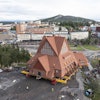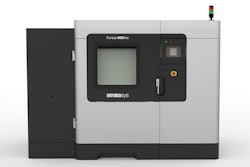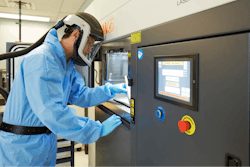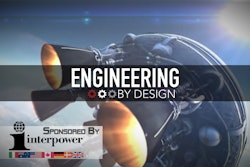On Tuesday, Stratasys revealed its new Continuous Build 3D Demonstrator, an automated, multi-cell additive manufacturing concept designed for low volume production and mass customization.
What is particularly interesting is that the design is scalable, so once it’s commercially available, you can buy these three packs (a single tower of three stacked FDM printers), and they all work together on a cloud-based architecture that manage the continuous, automated file processing and 3D printing. Essentially, you’re never removing parts from the printer, if anything you're emptying a bin twice a day. The parts are printed on a film that is automatically ejected before the next job in the queue starts printing.
According to Stratasys Co-Founder Scott Crump, the new release shows how the company is expanding into continuous build through automation with a demonstrator that marries the company’s Fortus FDM print engine technology with GrabCAD cloud-based 3D printing management software. The working interface actually looks heavily inspired by Tetris.
The company has a number of these systems in the field, and offered the opportunity to speak with three reps who have been beta-testing the 3D demonstrator at their facilities.
Dylan Oliver, General Manager with Oakland-based advanced manufacturer FATHOM was impressed with the demonstrator's output. His company, which also has a facility in Seattle, was printing hundreds of parts for customers. Now, he’s printing thousands of parts in waves, all using FDM technology that is familiar to his customers.
Jason Lilla is the regional account manager at In’Tech Industries, a Ramsey, MN-based tool-maker and injection molder that is using the 3D Demonstrator as a bridge tool to get concept parts into the hands of clients before they buy a tool. The injection-molded-grade parts brought the company new customers who wanted to get parts into the market quickly without the upfront tooling cots.
The use case that I found the most interesting was from the Savannah College of Art and Design (SCAD), and it wasn’t just because the school's dean, Viktor Ermoli, has the most amazing selection of bow ties. SCAD’s Design Lab provides the school’s 13,000 students with access to 3D printing, but the school had a huge backlog. Some students used to wait up to four weeks to get their hands on a part, which could mean the difference between passing and failing a course. With the 3D Demonstrator, SCAD is able to print more parts, faster, and more reliably. It works out to about 50 parts per day.
I must admit, that when Stratasys first unveiled the latest demonstrator, the first thing that I thought about was how it so closely resembles the Voodoo Manufacturing concept in Brooklyn, NY. Eerily similar. But Voodoo uses Makerbots and Mr. Ermoli has some experience with Makerbots in his lab. He said, “Makerbots are unreliable, and not designed for commercial purposes.” He said that if he had 20 Makerbots, he had 20 headaches, compared to nine sure bets with the 3D demonstrator.
Stratasys bought Makerbot in 2013.
However, the 3D demonstrator is not yet commercially available. While the company did note that other customers have them installed, they wouldn’t release the total number of machines in the field, or an estimated time when they will be on the market.
So if you want one, maybe it’s time to pick up a few credits at SCAD.
This is IEN Now with David Mantey.






















